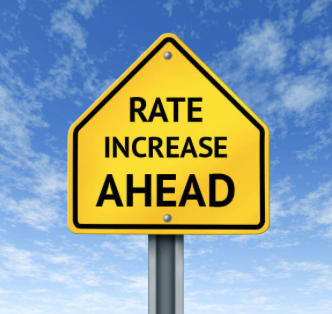
In 2020, the Virginia Legislature passed the Virginia Clean Economy Act (VCEA) in a vote largely along party lines. Democrats, including then-Delegate Suhas Subramanyam, voted for the measure, and Republicans voted against. The legislation was signed into law by Democrat Governor Ralph Northam. A salient element of the law is the requirement for Dominion Energy to convert to all clean energy sources by 2045 in accordance with a staged compliance table leading to that date and for Appalachian Power to reach the same goal by 2050.
Steve Haner of the Jefferson Institute, noted that in September 2024 Dominion Energy electricity rates will have risen to $143/thousand kWh, representing an 11% increase over current rates and a 23% overall since the 2020 passage of VCEA. Mr. Haner further observed that the increase would have been higher, $148/thousand kWh, but for the fact that Governor Younkin withdrew Virginia from the Regional Green House Gas Initiative (RGGI).
Mr. Haner points out this unnecessary increase in consumer costs for an ineffectual climate change initiative was expected. A much more surprising outcome, however, is the increased price for guaranteed access to electricity provided by PJM Interconnection, from the current $29 per megawatt day to $444 per megawatt day in the Dominion zone of PJM’s footprint. PJM Interconnection is the nation’s largest regional electric grid operator covering 13 states, including Virginia. The implication is that, should Dominion Energy be unable to maintain adequate generation capacity during the mandated transition to “clean” sources and be forced to obtain electric power from the cooperative, the impact on Virginia consumers would be dramatic.
The current costs being imposed on Virginia residents by the VCEA are inundated by long-term effects of the bill. An analysis conducted by the Center for the American Experiment compared two scenarios. In the first scenario, Virginia electricity demand will continue to be met through nuclear, gas, and limited coal; the second scenario was modeled on adhering to the requirements of the VCEA. The analysis concluded that meeting VCEA mandates will cost the average Virginia residential consumer an additional $804 per year in the 2033 timeframe, a whopping additional $2,326 per year in 2045, and continue to increase after that. Alternatively, the non-VCEA scenario cost increase is $135 per year for the average residential customer in 2036 with costs decreasing in the years after that reaching an approximately $90 per year increase over current rates in 2045. This means that under the VCEA, the average, residential electricity user will be paying an absurd $2,200 per year more than the cost of a non-VCEA scenario.
While the cost implications of VCEA alone are enough to point to the stupidity of this Democrat initiative, they are compounded by the significant decrease in the reliability of a grid that is vulnerable to the substitution of reliable “dispatchable” sources of power with the intermittent green solar and wind sources augmented with batteries. Think Texas.
Why are we doing this? Firstly, let’s note that even the Democrats are losing their enthusiasm for the “Green New Deal.” After reading Democratic National Convention transcripts, Holman W. Jenkins, Jr. notes in his August 23rd Wall Street Journal column that the words “climate change” were barely mentioned and that every transcript he read dropped the obligatory modifier “existential.” It would appear that Democrats are beginning to realize that their environmental policies are a train wreck.
Next, let’s consider that, according to the Union of Concerned Scientists, the U.S. produced only 13% of the World’s greenhouse gases in 2023. Robert Rapier, senior contributor on the energy sector at Forbes magazine, reported in February 2024 that over the last 15 years the U.S. has accomplished the world’s greatest reduction in greenhouse gas emissions by volume while increasing power output. Mr. Rapier’s data indicate this isn’t due to renewables, but principally due to the conversion from coal to natural gas energy production. Add to this that China, which produced 30% of the world’s greenhouse gases in 2023, increased its greenhouse gas production by more than 4 times the reduction achieved by the U.S. over the same 15-year period noted above. Should the Virginia economy and consumers take a major hit in energy cost and grid unreliability in the face of these statistics?
Finally, and most importantly, whatever we are told in the press, “the science” on climate is not settled. In his 2021 best seller, Unsettled, Dr. Steven E. Koonin makes this case forcibly and backs it up with data. A notable quote from his book reflects his findings after leading a panel for the American Physical Society to “stress test” the state of climate science. Koonin writes, “In short, the science is insufficient to make useful projections about how the climate will change over the coming decades, much less what effect our actions will have on it.”Spurred into action by the disastrous economic reality of VCEA, Virginia House Republicans unanimously voted to repeal the legislation during the 2022 Virginia General Assembly session. Democratic House members voted against the repeal including then-Delegate Suhas Subramanyam. Ultimately, the bill was defeated by Democrats in a Senate committee. Since the VCEA, at its core, is a tax on all Virginia businesses and consumers, we can chalk this up to Subramanyam never seeing a tax he didn’t like.Democrats cost money. Virginia’s 74th Governor, Glen Youngkin, stated, “We need an electrical grid which is stable, and we absolutely have to change direction. We must change direction from the clean energy plan that has passed, …. because it is not doable, affordable, or good for Virginia”. x
NEWSLETTER SIGNUP
Subscribe to our newsletter! Get updates on all the latest news in Virginia.

